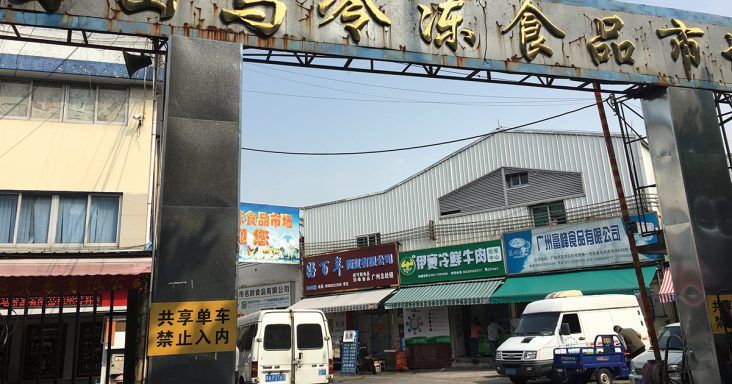UA, China team study food safety risks in supply chain
by April 17, 2019 4:07 pm 649 views

Researchers purchased products from various stores in China, and the products were tested using a prototype device that can identify food-borne bacterial infections. Researchers from the University of Arkansas and several universities and poultry companies in China are working on a project to improve food safety in the supply chain.
John Kent, clinical associate professor in the Department of Supply Chain Management in the Sam M. Walton College of Business at the University of Arkansas, has been traveling to China six times annually to work on a project to improve food safety in the supply chain there.
The work is part of a collaboration between the UA and three Chinese poultry companies, three universities in China, a research institute and a food test and inspection lab, also in the country. The UA team includes the College of Engineering, the Dale Bumpers College of Agriculture, Food and Life Sciences and the business college.
Work has been ongoing since fall 2016 when the Walmart Foundation gave a $2.3 million grant to establish the Walmart Food Safety Collaboration Center. The first phase of the project is expected to be completed in June after a prototype device, developed as a result of the project, is presented in May in Beijing.
The device is about the size of a 12-ounce soda can and is able to test poultry products for food-borne bacterial infections, such as salmonella. In China, about 70% of food-borne bacterial infections in humans were caused by salmonella. With the device, work to determine food safety that’s been completed in a lab can be completed at the farm, processing facility or store.
“What this project funding has done has developed devices that have essentially put that lab into a — think of it as one of these voice-activated Alexa devices,” Kent said. “This brings a little miniature version of the lab to the location in the supply chain and provides real-time feedback.” The device can connect to a mobile device, such as a phone, that can upload the information it collects to cloud-based storage, allowing it to be transmitted anywhere. Industrial engineers can use the data the device gathers along with data on products as they are transported throughout the supply chain, such as temperatures and shipping information, to identify future food safety issues in the supply chain.
The project team will apply for funding for the next phase of the project to determine a return on investment and work with industry partners and the government to improve food safety. The existing project is focused on the poultry industry, but the next step would be to improve food safety in other industries, such as pork, fruit and vegetables or seafood.
“The goal is to have an adoptable food safety management system that could be applied to food more generally,” Kent said.
